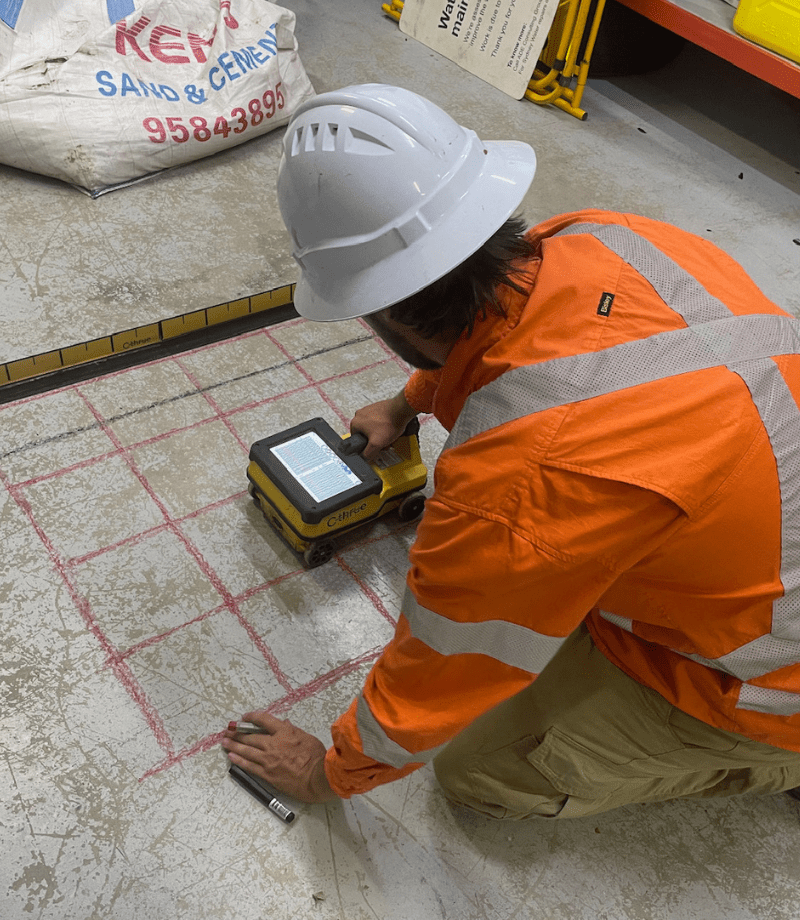Comprehensive Guide to Concrete Scanning Technologies
Comprehensive Guide to Concrete Scanning Technologies
Blog Article
Introduce the Transformative Power of Concrete Scanning in Making Best Use Of Effectiveness and Security
Concrete scanning has actually arised as a crucial tool in the construction sector, offering unmatched benefits in improving project effectiveness and making certain safety criteria. The transformative power of concrete scanning lies in its capacity to provide real-time information and thorough insights, reinventing exactly how jobs are intended and carried out.
Importance of Concrete Scanning
Guaranteeing the structural integrity and safety of building and construction jobs begins with the essential step of performing thorough concrete scanning. Concrete scanning is a non-destructive technique utilized to find and map subsurface aspects within concrete frameworks. This process is crucial in recognizing prospective hazards, such as rebar, post-tension wires, and avenues, that might be hidden within the concrete. By making use of sophisticated technologies like ground-penetrating radar (GPR) and electromagnetic induction, building groups can precisely situate these components without creating any type of damages to the structure.
Additionally, concrete scanning helps in enhancing job timelines and budget plan by avoiding unexpected costs and delays that may emerge due to unpredicted obstructions within the concrete. Eventually, spending in complete concrete scanning is a positive approach that enhances both effectiveness and safety and security in building tasks.
Exactly How Concrete Scanning Works
Concrete scanning runs as a crucial tool in building and construction projects by utilizing innovative modern technologies to spot and map subsurface components without causing architectural damage. Ground Penetrating Radar (GPR) and Electromagnetic Induction (EMI) are two main approaches made use of in concrete scanning.
During the scanning process, the information accumulated is examined in real-time, enabling instant recognition of prospective risks or barriers underneath the surface area. This information aids in decision-making, making sure that construction activities continue securely and successfully. Additionally, 3D imaging software application can be made use of to develop topographic maps of the subsurface components, better enhancing job preparation and implementation. By using these advanced modern technologies, concrete scanning considerably minimizes the risk of pricey problems and injuries on construction sites.
Advantages of Concrete Scanning
Using advanced scanning modern technologies in building and construction jobs provides a wide range of benefits, enhancing both efficiency and safety and security on-site. One of the key benefits of concrete scanning is the ability to detect and situate ingrained items such as rebar, post-tension cords, and avenues precisely. By identifying these aspects before drilling or reducing into concrete frameworks, the risk of unintentional strikes is considerably decreased, preventing prospective injuries to workers and damage to the structure itself. Furthermore, concrete scanning aids in planning and making extra efficiently, as it gives accurate info concerning the place and deepness of structural elements.

Situation Research Studies: Concrete Scanning Success

In an additional case, a building business used 3D concrete scanning to evaluate the condition old concrete structures in a historical structure. The comprehensive scans supplied useful understandings right into the extent of degeneration and aided focus on upkeep efforts efficiently. By proactively attending to locations of worry recognized with scanning, the firm was able to extend the lifespan of the framework and ensure occupant security.
These instance researches emphasize the transformative power of concrete scanning in improving effectiveness, precision, and security in building projects.
Implementing Concrete Scanning in Projects
Implementing advanced scanning innovations during building and construction tasks has actually ended up being increasingly vital for improving precision and safety and security. By integrating concrete scanning into view task preparation and execution, construction teams can recognize prospective hazards, such as rebar or post-tension wires, hidden within concrete frameworks. This positive approach lessens the danger of mishaps, delays, and pricey rework, eventually resulting in extra reliable task timelines and budget plans.
To implement concrete scanning successfully, project managers ought to team up carefully with seasoned scanning professionals to figure out the most suitable scanning methods for the specific project needs. Engaging scanning experts from the onset of a project allows the team to produce comprehensive scanning plans that address essential locations of worry and make sure thorough data collection.
In addition, integrating concrete scanning into regular job process can simplify decision-making procedures, as real-time check information gives prompt insights right into the problem of concrete structures - Concrete Scanning. This data-driven method assists in informed analytic and enables teams to make modifications without delay, promoting a culture of effectiveness and security throughout the task lifecycle

Conclusion
In conclusion, concrete scanning plays an essential duty in enhancing performance and security in construction tasks. By utilizing innovative modern technology to identify and map out underlying structures within concrete, this procedure helps to avoid pricey errors, make certain structural honesty, and minimize risks on website. With the ability to discover hidden aspects and give exact data, concrete scanning confirms to be a useful device for enhancing job outcomes and making the most of overall success.
Concrete scanning is a non-destructive technique made use of to discover and map subsurface elements within concrete structures. Furthermore, concrete scanning assists in maximizing project timelines and budget by preventing unforeseen prices and hold-ups that might arise due to unanticipated obstructions within the concrete. One remarkable case research study includes a large improvement project where concrete scanning played a crucial role in ensuring project success.In one more case, a building business made use of 3D concrete scanning to examine the condition of aging concrete frameworks in a Get the facts historical building. By integrating concrete scanning into project preparation and execution, building and construction teams can identify potential hazards, such as rebar or post-tension wires, hidden within concrete frameworks.
Report this page